Craving the cozy charm of Irish cooking? These 6 comforting dinners and 6 irresistible desserts deliver all the hearty goodness and old-world sweetness Ireland is known for. Whether you’re dreaming of rich stews and buttery potatoes or nostalgic treats like apple cake and goody, this list is packed with traditional favorites you’ll seriously regret not trying. Each dish brings a little taste of the Emerald Isle straight to your kitchen—no passport required. Ready to eat like the Irish do? From soul-warming mains to sweet finishes, these recipes are your ticket to satisfying, timeless comfort food.
1. Irish Stew: The Soul-Warming National Dish
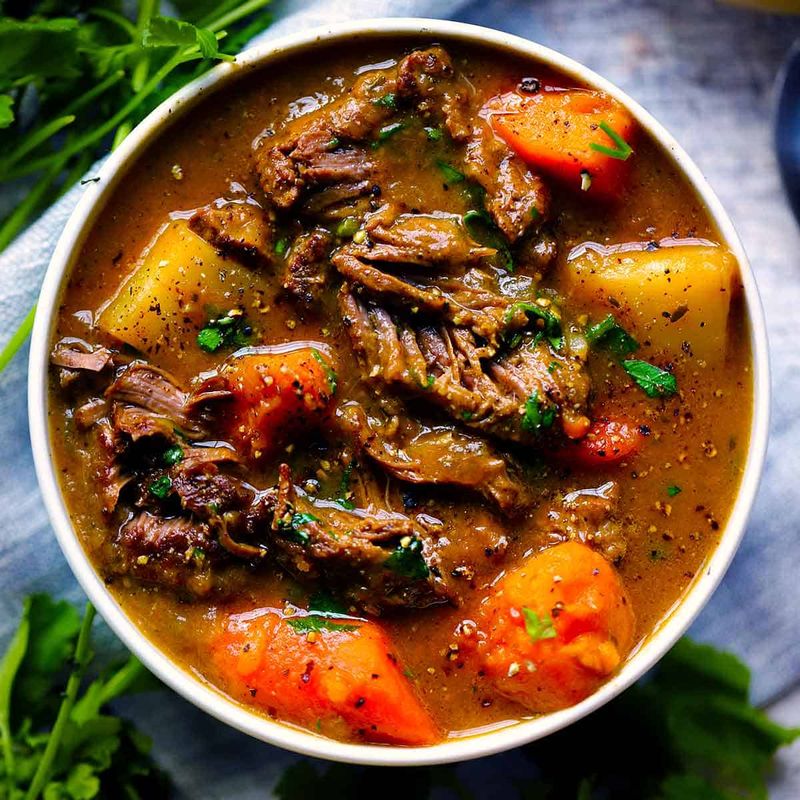
Nothing represents Irish cooking quite like a properly made Irish stew. Tender chunks of lamb slowly simmer with potatoes, onions, and carrots until they practically melt together in harmony. The broth, seasoned simply with thyme and parsley, carries rich flavors that develop over hours of gentle cooking.
Traditionally made in one pot over a hearth fire, this peasant dish reflects Ireland’s agricultural roots and practical cooking methods. Modern versions might include Guinness or additional vegetables, but the core remains unchanged.
Served with crusty soda bread for sopping up every last drop, Irish stew epitomizes comfort food that has sustained generations through harsh winters and celebratory gatherings alike.
2. Colcannon: Velvety Potato Perfection
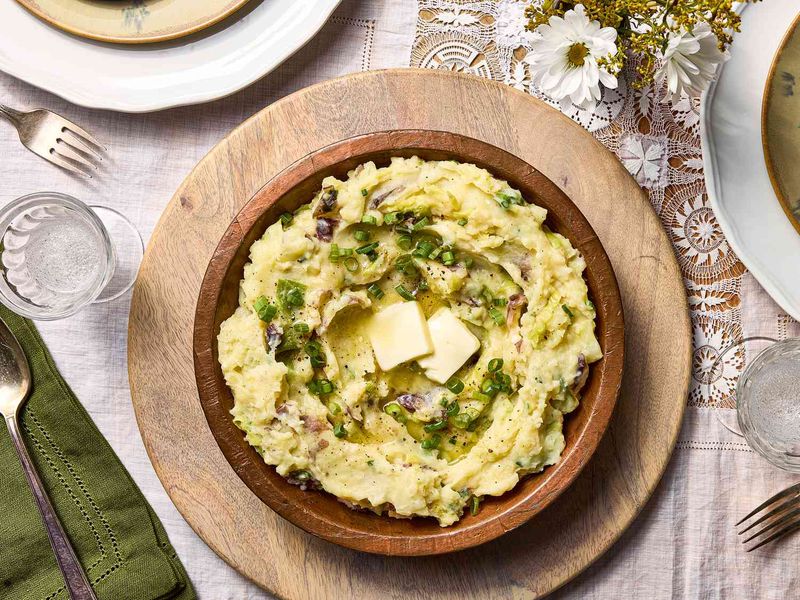
Humble ingredients transform into something magical in colcannon, where buttery mashed potatoes meet vibrant greens. Cabbage or kale gets folded into creamy potatoes along with generous amounts of butter, milk, and sliced scallions, creating layers of texture and flavor.
Every Irish family seems to have their own variation – some add bacon for smokiness, others prefer leeks to scallions. The signature presentation includes a small well in the center filled with melting butter that diners can dip each forkful into.
Historically eaten year-round but especially on Halloween, when coins wrapped in paper were hidden inside as prizes, colcannon remains a beloved side dish that pairs wonderfully with everything from roast meat to simple fried eggs.
3. Dublin Coddle: The Capital’s Comfort Classic
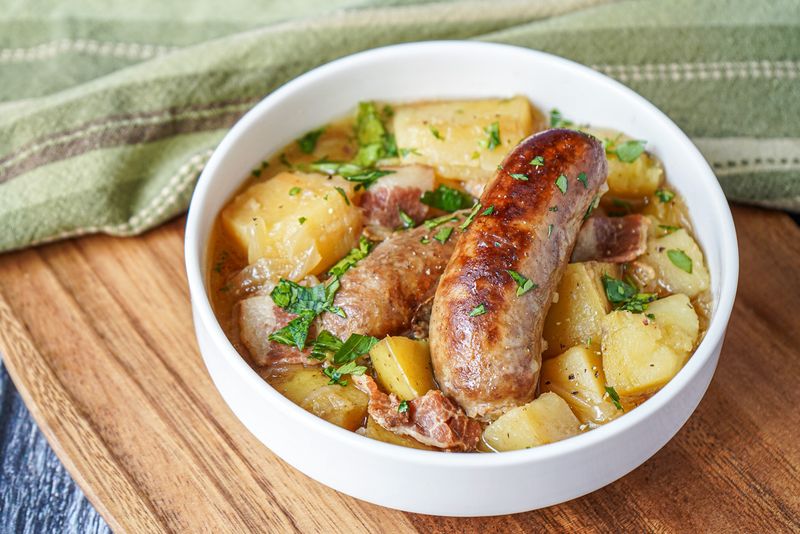
Born from necessity in Dublin households, coddle emerged as a Thursday night staple to use up meat before Friday’s traditional fast. Bangers (sausages) and rashers (bacon) form the savory foundation, while potatoes, onions, and sometimes barley soak up all the porky goodness.
Unlike many stews, coddle is often simmered rather than boiled, allowing each ingredient to retain its distinct character. The name comes from the gentle “coddling” cooking method – low and slow is the secret.
James Joyce and other Irish writers have mentioned this dish in their works, cementing its place in both culinary and literary heritage. When Dublin natives crave a taste of home, this unfussy, filling pot of comfort is often what they remember.
4. Champ: Simplicity in a Bowl
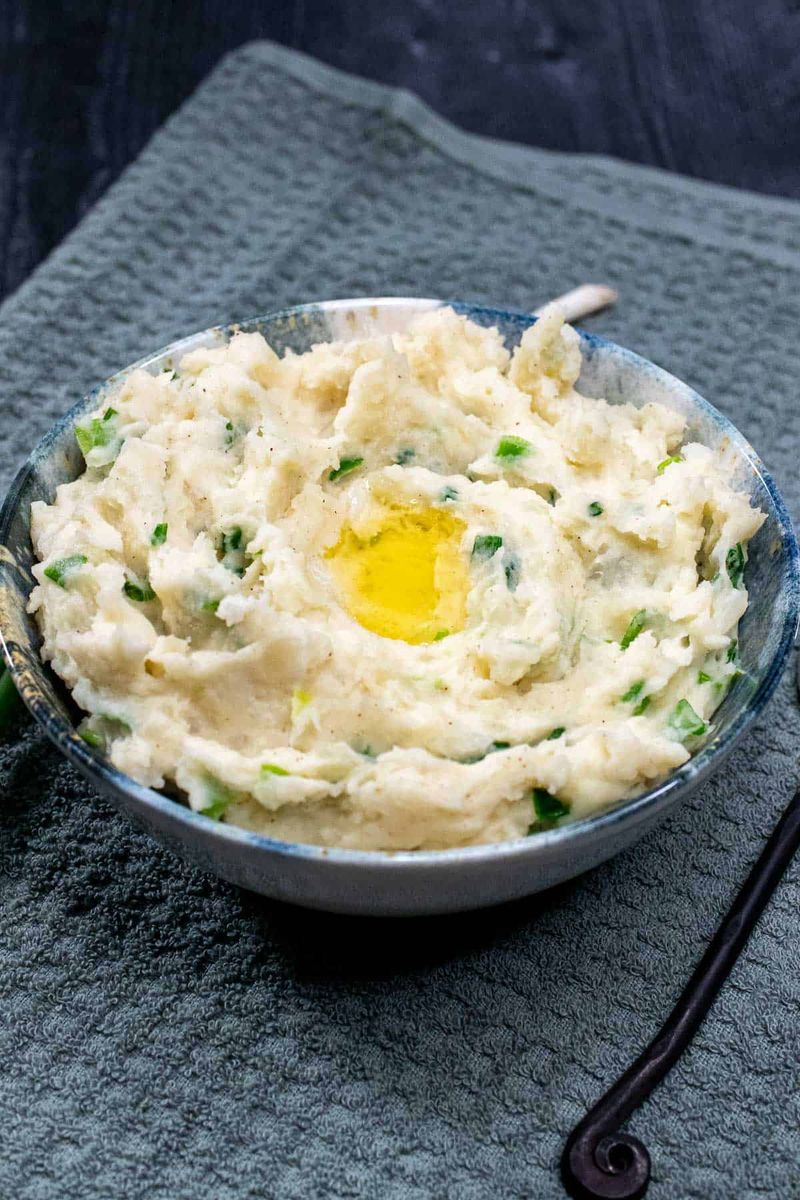
Sometimes the most uncomplicated dishes bring the greatest pleasure, and champ perfectly demonstrates this principle. At its essence, this northern Irish classic combines just four ingredients: potatoes, scallions, butter, and milk.
The ritual of eating champ is part of its charm. A crater formed in the center holds a pool of melting butter, and each forkful is dipped into this golden well before being enjoyed. The scallions (or “spring onions” as they’re known locally) are chopped and steeped in warm milk before being stirred through the fluffy potatoes.
Farmhouse kitchens across Ulster have served champ for generations, often alongside Ulster fry or boiled ham. Its name comes from the Irish word “brúitín,” meaning mashed or pounded.
5. Guinness Beef Stew: Dark Beer Magic
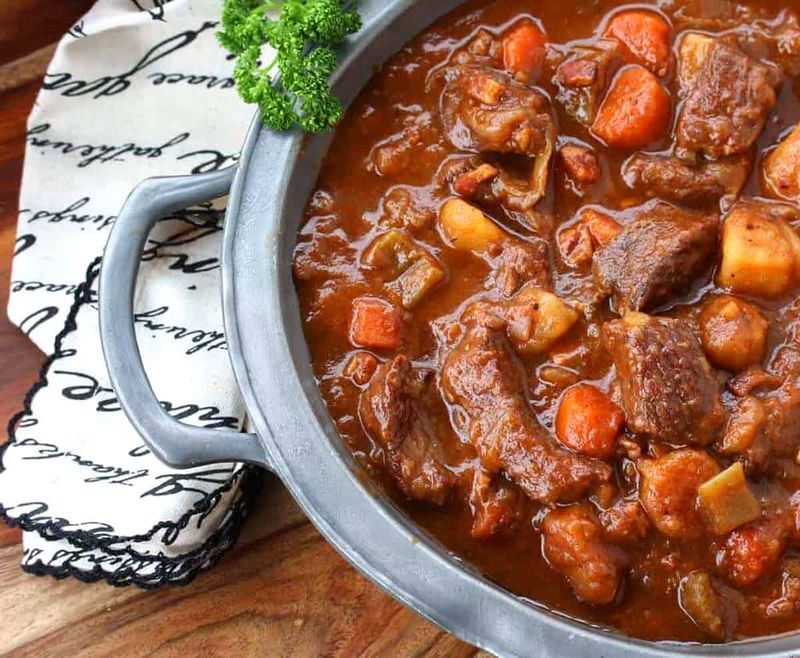
The marriage of Ireland’s famous stout with chunks of beef creates a stew of remarkable depth and character. Unlike its cousin Irish stew, this version gains complexity from Guinness, which tenderizes the meat while adding coffee and chocolate undertones that complement the savory elements perfectly.
Root vegetables like carrots, parsnips, and potatoes add sweetness and substance, while a touch of tomato paste enhances the rich brown gravy. Many cooks add a splash of Worcestershire sauce or brown sugar to balance the slight bitterness from the beer.
Once considered special-occasion food due to the cost of beef, this stew now appears regularly in pubs and home kitchens alike. The longer it simmers, the more the flavors meld and intensify, making it even better as leftovers.
6. Boxty: Potato Pancakes with Heritage
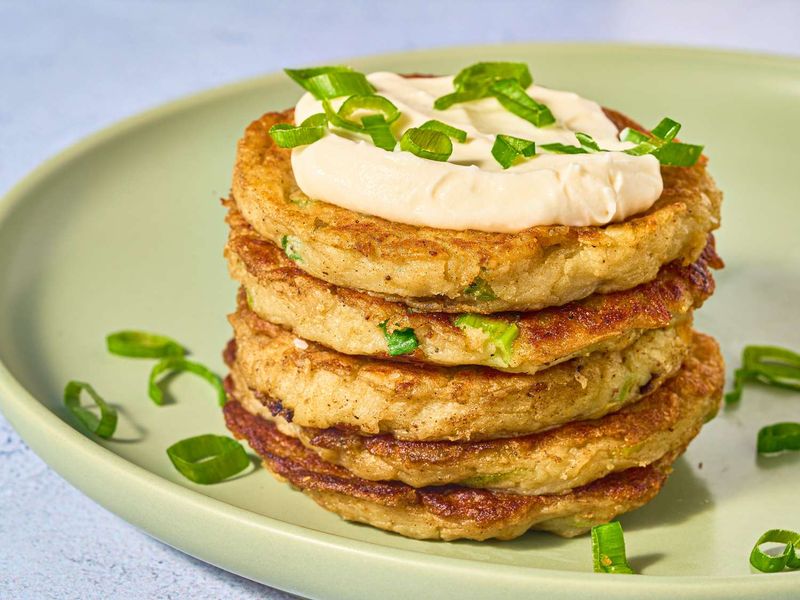
“Boxty on the griddle, boxty in the pan; if you can’t make boxty, you’ll never get a man.” This old Irish rhyme speaks to the cultural importance of these crispy potato pancakes. Combining both raw grated potatoes and leftover mashed potatoes creates their unique texture – crisp exterior giving way to a tender inside.
County Leitrim and the northern midlands claim boxty as their own, serving these versatile cakes as breakfast with eggs, lunch with smoked salmon, or dinner alongside Irish bacon. Traditional preparation involves squeezing excess moisture from the raw potatoes, a crucial step for achieving the proper consistency.
Modern Irish restaurants have elevated boxty with gourmet fillings and presentations, but home cooks still appreciate its humble origins as a clever way to stretch the potato harvest.
7. Irish Apple Cake: Farmhouse Favorite
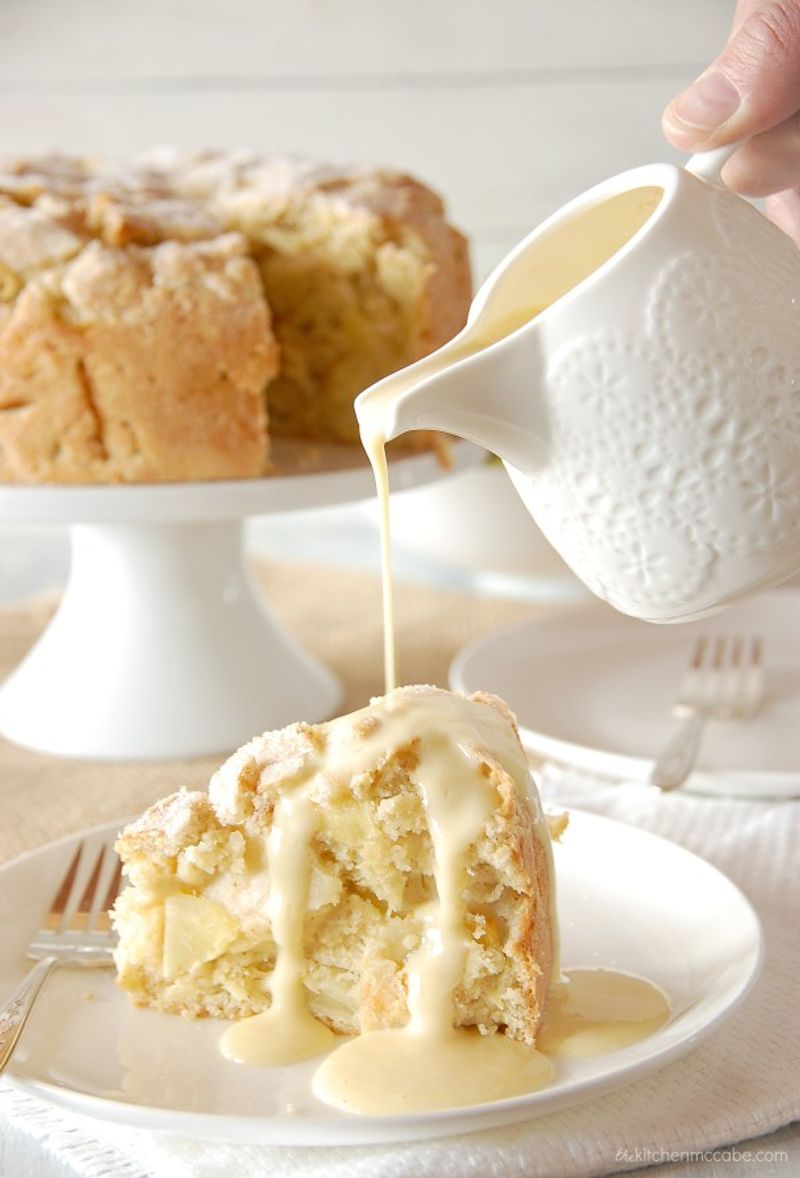
Long before fancy pastry shops existed, Irish farmhouses produced this rustic cake using apples from their own orchards. The beauty of Irish apple cake lies in its honest simplicity – a not-too-sweet, tender crumb studded with tart apple chunks and warmed with cinnamon and nutmeg.
The streusel topping adds a pleasant contrast, with its crumbly texture and hint of extra sweetness. Regional variations abound, with some versions incorporating oats or hazelnuts into the topping, while others feature a custard layer baked right into the cake.
Traditionally served with a generous pour of warm custard sauce (or “Bird’s custard” in many homes), this dessert embodies the practical ingenuity of Irish baking. Many families still use recipes passed down through generations, often scribbled on well-worn recipe cards.
8. Barmbrack: The Fortune-Telling Fruit Bread
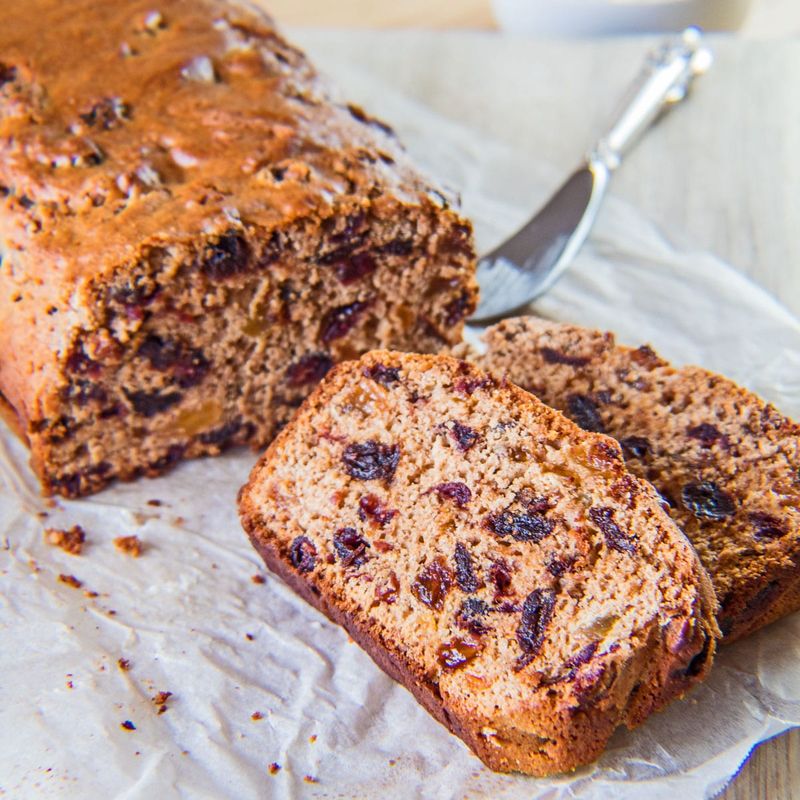
More than just a teatime treat, barmbrack carries centuries of Irish tradition and superstition. This speckled fruit bread gets its distinctive moisture from tea-soaked raisins, currants, and candied peel that plump up overnight before baking, creating little jewels throughout the lightly spiced dough.
At Halloween, small objects were traditionally baked inside – a ring meant marriage within the year, a coin signified wealth, while a thimble foretold spinsterhood. Modern versions typically include just the ring for safety, but the anticipation of finding it still brings excitement to the table.
The name comes from the Irish “báirín breac” meaning “speckled bread,” referring to the dried fruits dotting the loaf. Sliced thick and slathered with butter, it pairs perfectly with a strong cup of Irish breakfast tea.
9. Bread and Butter Pudding with Whiskey Sauce: Elegant Leftovers
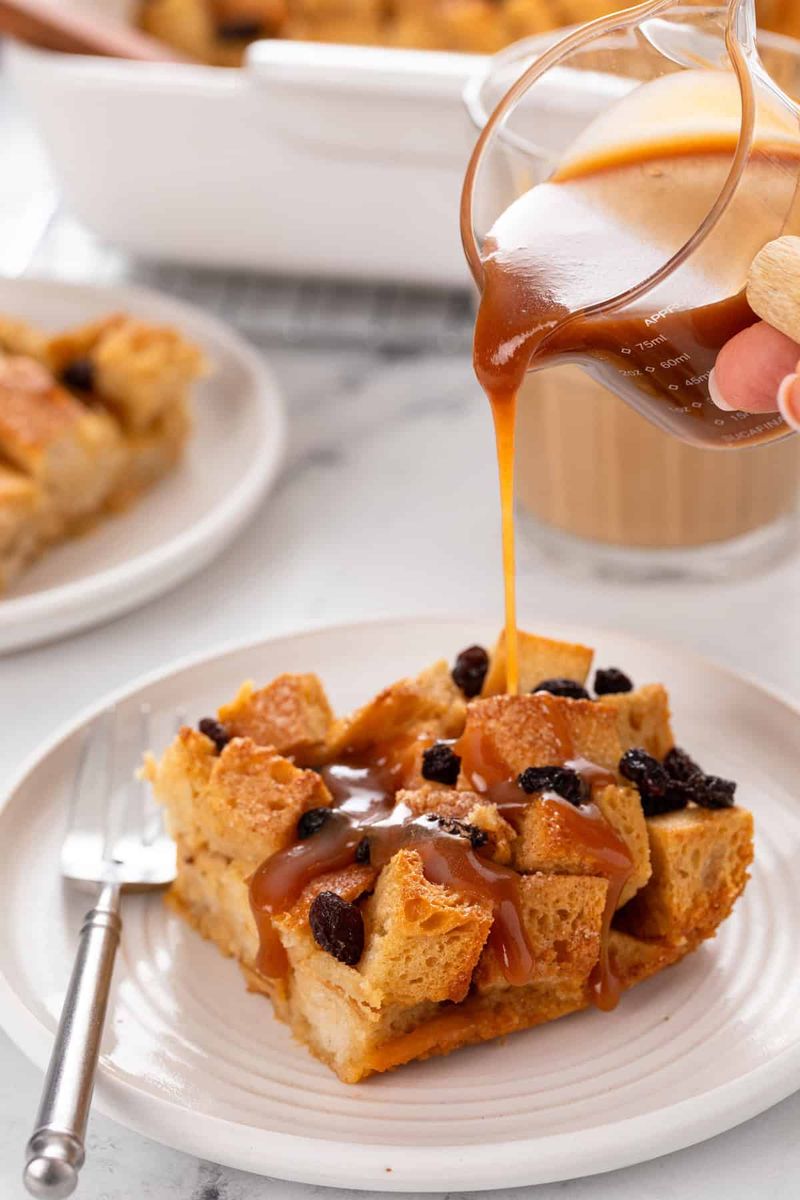
Irish frugality shines in this transformation of stale bread into pure decadence. Buttered bread slices, layered with plump raisins soaked in Irish whiskey, become something magical when bathed in vanilla-scented custard and baked until golden and puffy.
The crowning glory comes from the whiskey sauce – a warm, silky concoction of cream, sugar, and a generous splash of Ireland’s finest spirit. Some families guard their sauce recipes jealously, with secret ingredients like orange zest or brown sugar passed through generations.
While humble in origin, this pudding has found its way onto fine dining menus, often elevated with brioche or croissants instead of plain bread. Regardless of fancy ingredients, its soul remains the same – comfort food that makes something extraordinary from the ordinary.
10. Guinness Chocolate Cake: Stout-Infused Decadence
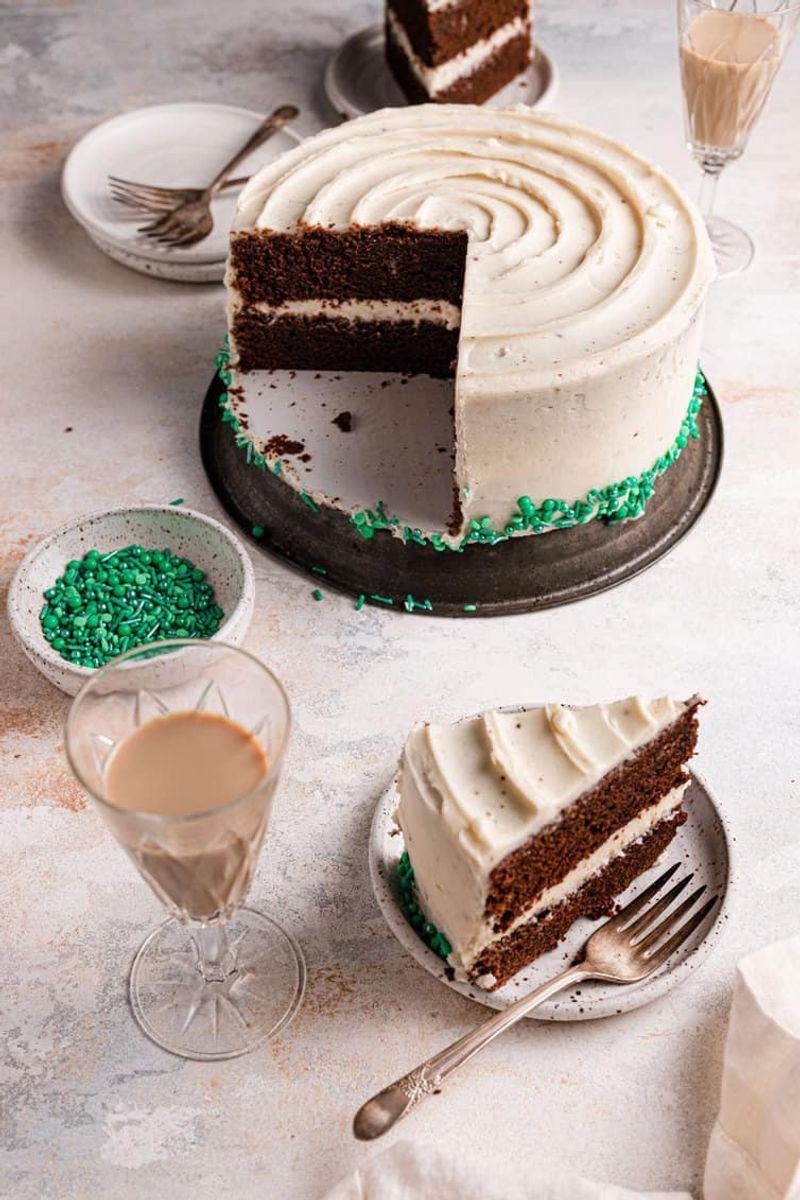
The secret behind this cake’s extraordinary moistness and depth lies in a surprising ingredient – Ireland’s iconic black stout. Guinness brings out chocolate’s richness while adding subtle malty notes that elevate this dessert beyond ordinary chocolate cake.
The contrast between the almost black cake and cloud-white Baileys cream cheese frosting creates a visual nod to a perfectly poured pint. Many bakers add a touch of sour cream to the batter for extra tenderness, while others incorporate espresso powder to intensify the chocolate flavor.
Originally created for St. Patrick’s Day celebrations, this cake has become a year-round favorite in Irish households and beyond. Despite its sophisticated flavor profile, it remains unpretentious – much like Ireland itself – and improves over a day or two as the flavors meld.
11. Fifteens: No-Bake Northern Delight
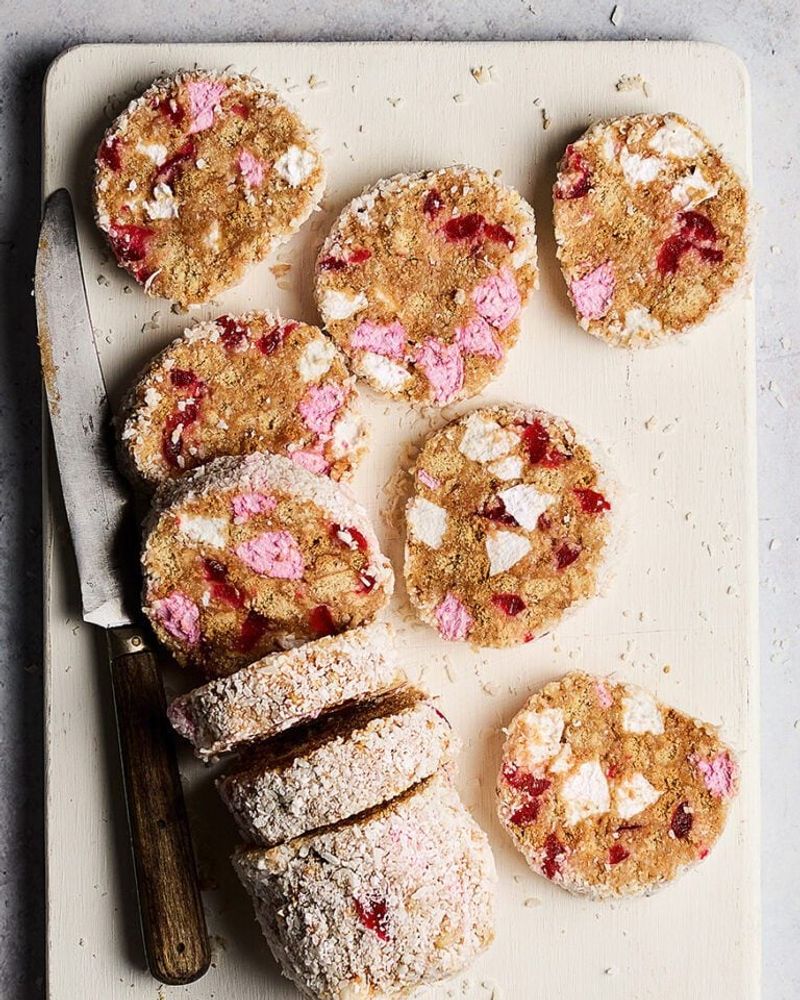
Beloved across Northern Ireland, these sweet refrigerator treats earned their numerical name from their simple formula – 15 digestive biscuits, 15 marshmallows, and 15 glacé cherries. Perfect for novice bakers or cooking with children, fifteens require no oven time, just crushing, mixing, and chilling.
The magic happens when crushed biscuits combine with condensed milk, creating a dough that holds the colorful marshmallows and cherries. Rolled in desiccated coconut, the log chills until firm enough to slice into rounds that reveal a polka-dot pattern inside.
Church bake sales and community functions across Ulster wouldn’t be complete without plates of these cheerful treats. While purists stick to the classic recipe, creative variations might include chocolate chips, dried cranberries, or even a splash of Irish cream liqueur for grown-up versions.
12. Goody: Nostalgic Bread Pudding Porridge
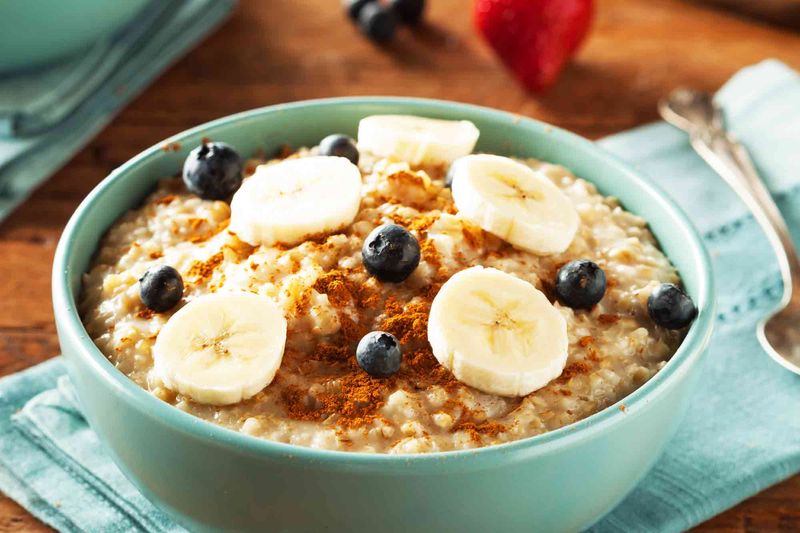
Few Irish desserts evoke childhood memories quite like goody – a humble comfort food that transforms everyday white bread into a warm, spoonable treat. Torn bread simmers gently in milk with sugar and warming spices until it breaks down into a pudding-like consistency that falls somewhere between porridge and dessert.
Cinnamon is the traditional spice, though some families add nutmeg or vanilla for their own signature version. The beauty of goody lies in its adaptability – made thinner as a sweet drink or thicker as a pudding, served warm on cold evenings or chilled in summer.
Often prepared by grandmothers for poorly children or as an easy dessert when resources were scarce, goody represents Irish cooking at its most resourceful. Despite its simplicity, this comfort in a bowl continues to be passed down through generations.
Leave a comment